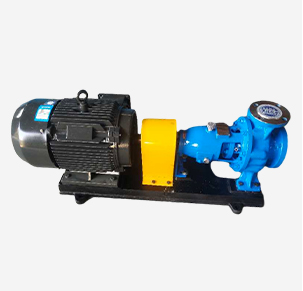Norwegian
- Afrikaans
- Albanian
- Amharic
- Arabic
- Armenian
- Azerbaijani
- Basque
- Belarusian
- Bengali
- Bosnian
- Bulgarian
- Catalan
- Cebuano
- Corsican
- Croatian
- Czech
- Danish
- Dutch
- English
- Esperanto
- Estonian
- Finnish
- French
- Frisian
- Galician
- Georgian
- German
- Greek
- Gujarati
- Haitian Creole
- hausa
- hawaiian
- Hebrew
- Hindi
- Miao
- Hungarian
- Icelandic
- igbo
- Indonesian
- irish
- Italian
- Japanese
- Javanese
- Kannada
- kazakh
- Khmer
- Rwandese
- Korean
- Kurdish
- Kyrgyz
- Lao
- Latin
- Latvian
- Lithuanian
- Luxembourgish
- Macedonian
- Malgashi
- Malay
- Malayalam
- Maltese
- Maori
- Marathi
- Mongolian
- Myanmar
- Nepali
- Norwegian
- Norwegian
- Occitan
- Pashto
- Persian
- Polish
- Portuguese
- Punjabi
- Romanian
- Russian
- Samoan
- Scottish Gaelic
- Serbian
- Sesotho
- Shona
- Sindhi
- Sinhala
- Slovak
- Slovenian
- Somali
- Spanish
- Sundanese
- Swahili
- Swedish
- Tagalog
- Tajik
- Tamil
- Tatar
- Telugu
- Thai
- Turkish
- Turkmen
- Ukrainian
- Urdu
- Uighur
- Uzbek
- Vietnamese
- Welsh
- Bantu
- Yiddish
- Yoruba
- Zulu
Telephone: +86 13120555503
Email: frank@cypump.com
nov . 06, 2024 13:22 Back to list
Understanding the Importance of Sewer Pumps in Waste Management Systems
Understanding Sewage Pumps Essential Components of Wastewater Management
Sewage pumps, also known as wastewater pumps or effluent pumps, play a crucial role in modern sanitation systems, ensuring that wastewater is effectively transported from homes and businesses to treatment facilities. These pumps are designed to handle the challenging task of moving liquids that may contain solid waste and other materials. As urban areas continue to grow, the importance of efficient sewage pumping systems becomes increasingly evident in maintaining public health and environmental quality.
The Function and Importance of Sewage Pumps
Sewage pumps are used to move wastewater from lower to higher elevations, particularly when the natural flow of gravity is inadequate. In places where gravity cannot facilitate the flow of sewage, such as in basements or low-lying areas, a sewage pump becomes an indispensable part of the drainage system. By pushing sewage through pipes to a sewage treatment facility, these pumps help prevent backflow and flooding, ensuring that communities remain clean and functional.
The need for sewage pumps is not limited to residential homes. They are equally essential in commercial and industrial settings, where high volumes of wastewater must be managed. Sewage pumps can be found in various configurations, from submersible pumps located directly within the sewage pit to pedestal pumps that stand above the sump to prevent clogs and damage from debris.
Types of Sewage Pumps
There are several types of sewage pumps, each designed for specific applications and requirements
1. Submersible Sewage Pumps These pumps are submerged in the wastewater and are used in both residential and industrial applications. Their design allows for efficient pumping, reducing the risk of clogging and ensuring that the entire pump is protected from external elements.
2. Effluent Pumps These pumps are typically used for pumping wastewater with smaller solids compared to sewage pumps. They are often employed in septic systems to transport effluent from the septic tank to the drain field.
sewer pumps

3. Grinder Pumps Designed to handle sewage that contains solid waste, grinder pumps have cutting blades that grind the waste into smaller pieces. This makes it easier to move the sewage through smaller diameter pipes, which can be particularly beneficial in residential developments where space is limited.
Key Considerations When Choosing a Sewage Pump
When selecting a sewage pump, several important factors must be considered
- Flow Rate The flow rate, typically measured in gallons per minute (GPM), indicates how much sewage the pump can move within a specific timeframe. Choosing a pump that can handle the anticipated flow rate is essential to prevent overloading.
- Head Height This refers to the vertical distance the pump must lift the sewage. It’s critical to select a pump with an adequate head height for the specific application.
- Material and Build Quality Since sewage can be corrosive and abrasive, opting for pumps made with durable materials, such as stainless steel or cast iron, can enhance longevity and effectiveness.
- Automatic vs. Manual Operation Some sewage pumps offer automatic operation features, including float switches that activate the pump when wastewater reaches a certain level. This can be particularly beneficial for homeowners seeking convenience and reliability.
Conclusion
In conclusion, sewage pumps are indispensable tools for efficient wastewater management in both residential and commercial settings. Their ability to transport sewage safely and effectively helps maintain hygiene, prevent flooding, and safeguard the environment. As technology continues to advance, the development of more efficient, reliable, and environmentally friendly sewage pumps becomes increasingly critical. For anyone involved in wastewater management, understanding the types, applications, and operational principles of sewage pumps is essential for making informed decisions that protect public health and ensure sustainable urban living.
-
ISG Series Vertical Pipeline Pump - Chi Yuan Pumps Co., LTD.|Energy Efficiency, Corrosion Resistance
NewsAug.03,2025
-
ISG Series Pipeline Pump - Chi Yuan Pumps | Energy Efficiency&Compact Design
NewsAug.03,2025
-
ISG Series Vertical Pipeline Pump - Chi Yuan Pumps Co., LTD.|High Efficiency, Low Noise, Durable
NewsAug.02,2025
-
ISG Series Vertical Pipeline Pump - Chi Yuan Pumps | High Efficiency, Low Noise
NewsAug.02,2025
-
ISG Series Vertical Pipeline Pump- Chi Yuan Pumps Co., LTD.|High Efficiency&Compact Design
NewsAug.02,2025
-
Heavy-Duty Mining Sludge Pumps - Wear-Resistant Slurry Handling
NewsAug.02,2025










